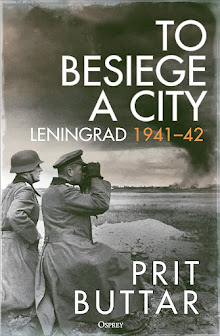Ten minutes walk from my home in Somerset, England there is an interesting reference to the Battle of Gettysburg. It can be found on a Durbin family gravestone in the cemetery adjacent to St Andrew's Church, Clevedon. The church is an idyllic location overlooking the Severn estuary in countryside not dissimilar to the field in Pennsylvania, USA where one of the family died on a hot summers day in July, 1863. That person was Fred Durbin who, at the age of 21, had joined the Union Army of the Potomac at a Recruiting Station near the Manhattan side of the Brooklyn Bridge in New York City.
 |
| Durbin Gravestone in Clevedon |
The large Victorian tombstone at St Andrew's is on the right hand side as you enter the churchyard. The stone marks the burial site of William and Caroline Durbin who died January 21st 1883 and January 14th 1879 respectively. The stone also commemorates their daughter, Caroline Wreford who died June 14th 1863 aged 10. Fred Durbin, eldest son of William and Caroline is 'affectionately remembered'.
Earlier this month I spent a few days with friends walking the civil war battlefields of Pennsylvania, Maryland and Northern Virginia. Gettysburg was the first stop on our tour so we braved the driving rain to traverse the 'fish-hook' shaped Federal front lines looking for the spot where Fred Durbin met his untimely death.
 |
| The Battle of Gettysburg - Panorama |
Fred Durbin served with the 78th New York Regiment (known as the Cameron Highlanders) and by the time of Gettysburg he had attained the rank of Sergeant. Fred was killed on the 2nd July (the second day of the battle). The 78th had moved into the line at Culp's Hill on the morning of that day. The deployment started quietly. Later Battery K, 5th US Artillery placed five guns near the positions occupied by the 78th and men of the Regiment helped with supply. In this first local action of the day the 78th lost one killed and one wounded.
 |
| Union artillery piece on Culp's Hill, Gettysburg |
Later in the day Colonel Hammerstein was ordered to take his men forward in support of skirmishers on the forward slope of Culp's Hill. The troops were in place just in time to receive an attack from Johnson's Confederate Division at Rock Creek.
 |
| Memorial to the 78th and 102nd New York Regiments |
The 78th resisted stubbornly on the skirmish line and toward evening time completed a fighting withdrawal back to the breastworks where the rest of the Brigade was entrenched. The 78th held the line adjacent to the 102nd New York Regiment. After a fierce firefight the Confederates withdrew though they subsequently attacked in force the following morning. By the time the 78th came out of the line they had lost 30 (killed and wounded) out of a roster of 198 men. Fred Durbin was one of those killed on the morning of the 3rd.
 |
| Gettysburg National Cemetery |
Latterly Durbin was re-interred in the vast National Cemetery at Gettysburg. (New York Plot, Section F, Site no. 10).
On the the 19th November 1863 President Abraham Lincoln delivered his famous 'Gettysburg Address' at the cemetery on the day that the site was formally dedicated.
The commemorative stone back in Durbin's home town of Clevedon reads 'In affectionate remembrance of Frederick, eldest and much beloved son of the above (He fell in battle at Gettysburg, Pennsylvania, America) July 3rd 1863 aged 22 years'.
 |
| Fred Durbin referenced at St Andrew's Church, Clevedon |
I will write about the rest of the trip later. We covered a lot of ground. Washington, Gettysburg, Antietam, Fredericksburg, Drewery's Bluff, Chancellorsville, The Wilderness, Spotsylvania Courthouse, Richmond, City Point. Petersburg and Five Forks. To see my photographs from the trip click here.










